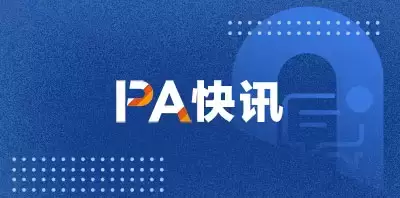 |
|
 |
|
 |
|
 |
|
 |
|
 |
|
 |
|
 |
|
 |
|
 |
|
 |
|
 |
|
 |
|
 |
|
 |
|
Bitmartの7周年を祝うWuブロックチェーンは、暗号通貨業界の大手メディアプラットフォームの1つである - Bitmartの創設者シェルドンとの独占インタビューを実施しました。

Mahe, Seychelles, March 18, 2025 (GLOBE NEWSWIRE) -- Celebrated BitMart’s 7th anniversary, Wu Blockchain—one of the cryptocurrency industry's leading media platforms—conducted an exclusive interview with BitMart founder Sheldon. The interview provides an in-depth retrospective on Sheldon's journey from discovering Bitcoin as a college student to founding and scaling BitMart into a global digital asset exchange. It also delves into the exchange’s evolution over the past seven years, key industry trends, and insights into the regulatory landscape shaping the future of crypto trading.
Mahe、Seychelles、2025年3月18日(Globe Newswire) - Bitmartの7周年を祝ったWuブロックチェーン(暗号通貨業界の大手メディアプラットフォームの1つ)が、Bitmartの創設者シェルドンとの独占インタビューを実施しました。このインタビューは、シェルドンのビットコインを大学生として発見したことから、ビットマートをグローバルなデジタル資産交換に設立し、拡大することまで、詳細な回顧展を提供します。また、過去7年間にわたる取引所の進化、主要な業界の動向、および暗号取引の将来を形作る規制環境に関する洞察を掘り下げています。
The full interview is presented below.
完全なインタビューを以下に示します。
Colin: This year marks the 7th anniversary of BitMart. Congratulations on BitMart’s continued growth and on overcoming numerous challenges along the way. Could you start by briefly introducing your background, including your educational experience and your story before entering the crypto space?
コリン:今年はビットマートの7周年を迎えます。 Bitmartの継続的な成長と、途中で多くの課題を克服することをお祝いします。暗号スペースに入る前に、教育経験やストーリーなど、背景を簡単に紹介することから始めますか?
Sheldon: Indeed, this year marks the 7th anniversary of our platform. Actually, the company has been established for about 7 years, with around 9 months spent in preparation before our official launch on March 15.
シェルドン:確かに、今年はプラットフォームの7周年を迎えます。実際、同社は約7年間設立されており、3月15日に公式に発売される前に約9か月間準備に費やされています。
Let me quickly introduce my past experiences. I studied computer science at Hangzhou Dianzi University. Due to this background, I came into contact with blockchain relatively early, as there is a close link between computer science and blockchain technology. I first encountered Bitcoin in early 2013 while I was a sophomore, as I was interested in new technologies and eager to discover cutting-edge innovations.
私の過去の経験をすばやく紹介させてください。杭州ジアジ大学でコンピューターサイエンスを学びました。この背景により、コンピューターサイエンスとブロックチェーンテクノロジーの間に密接なリンクがあるため、私は比較的早くブロックチェーンと接触しました。私は2年生のときに2013年初頭にビットコインに初めて遭遇しました。新しいテクノロジーに興味があり、最先端の革新を発見したいと思っていました。
At that time, I was still using Renren, a social media platform, where I had a small site on "Renren Xiaozhan," a platform for coding and collecting interesting news in the tech field to share. One day, I read a news article from Brooklyn, New York, about two young people who improved the ASIC mining algorithm, increasing Bitcoin's mining speed by hundreds of times. This news sparked my interest, leading me to further investigate Bitcoin.
当時、私はまだソーシャルメディアプラットフォームであるRenrenを使用していました。そこでは、「Renren Xiaozhan」に小さなサイトがありました。ある日、ニューヨーク州ブルックリンのニュース記事を読みました。ASICマイニングアルゴリズムを改善した2人の若者について、ビットコインの採掘速度を何百回も増やしました。このニュースは私の興味を引き起こし、ビットコインをさらに調査するようになりました。
Initially, I was extremely enthusiastic. However, to be honest, I only had knowledge of computers and programming, but not finance. I viewed Bitcoin as a revolutionary technology capable of changing the world. From the aspect of financial freedom, it enabled global transactions to be performed quickly and easily, which was a strong point of attraction for me at that time. As a young person, I always pursued freedom, and I thought Bitcoin was really cool.
当初、私は非常に熱心でした。しかし、正直に言うと、私はコンピューターとプログラミングの知識しか持っていませんでしたが、資金はありませんでした。私はビットコインを世界を変えることができる革新的な技術と見なしました。金融の自由の側面から、グローバルトランザクションを迅速かつ簡単に実行できるようになりました。これは、当時の私にとって強い魅力でした。若い人として、私はいつも自由を追求し、ビットコインは本当にクールだと思いました。
Colin: So, did you mine at that time?
コリン:それで、あなたはその時に採掘しましたか?
Sheldon: Yes! While I was still studying, I tried mining using my own computer. The industry was still small at that time, and we often met at offline events. For instance, during the summer of 2013, I attended a Bitcoin conference in Hangzhou, where I met industry figures like CZ, Star Xu from OK, Jame Gong, Mo Buyi, and Nick Chong. Everyone participated out of their enthusiasm for blockchain, and there was a lot of interaction, allowing me to meet many future industry partners.
シェルドン:はい!私がまだ勉強している間、私は自分のコンピューターを使ってマイニングを試みました。当時は業界はまだ小さいものであり、私たちはしばしばオフラインイベントで会いました。たとえば、2013年の夏の間に、私は杭州でのビットコイン会議に出席しました。そこでは、CZ、OKのスターXu、Jame Gong、Mo Buyi、Nick Chongなどの業界の人物に会いました。誰もがブロックチェーンへの熱意から参加し、多くの相互作用があり、多くの将来の業界パートナーに会うことができました。
Colin: Did you continue to follow the industry after that?
コリン:その後も業界をフォローし続けましたか?
Sheldon: During college, I did some blockchain development work and even created my own coin, which became relatively well-known in 2013. Afterwards, I decided to focus more on my studies and went to Stevens Institute of Technology in New Jersey, USA, to pursue a master’s degree in computer science. Although I returned to the traditional computer field in terms of academics, I still kept abreast of developments in the blockchain industry.
シェルドン:大学中、私はいくつかのブロックチェーン開発作業を行い、2013年に比較的有名になりました。その後、私は自分の研究にもっと焦点を合わせ、米国ニュージャージー州のスティーブンス研究所に行き、コンピューターサイエンスの修士号を取得しました。私は学者の観点から従来のコンピューター分野に戻りましたが、私はまだブロックチェーン業界の開発に遅れをとっていました。
Overall, Bitcoin did serve as an inspiration, especially with the financial innovations it brought. What truly deepened my understanding of this industry was in 2016, when a fellow alumnus from my university, who had gone to the US before me and was working at SAP in Seattle, became the group leader of our overseas alumni association. We often chatted and exchanged views on blockchain and Bitcoin. During those years, I also made some attempts at algorithmic trading and discussed related issues with him.
全体として、ビットコインは、特にそれがもたらした金融革新により、インスピレーションとして機能しました。この業界に対する私の理解を本当に深めたのは、私の前に米国に行ってシアトルのSAPで働いていた私の大学の仲間の卒業生が、海外同窓会のグループリーダーになった2016年でした。私たちはしばしば、ブロックチェーンとビットコインに関する意見をチャットして交換しました。その年の間に、私はアルゴリズム取引についてもいくつかの試みをし、彼と関連する問題について議論しました。
Later, I read the Ethereum white paper, and after finishing it, I felt extremely invigorated. At that time, Ethereum's vision was to build a "world computer," aiming to put all computation and storage on-chain. This model was more easily understood compared to Bitcoin's, presenting a grander vision and broader imaginative space, along with richer possibilities for practical application scenarios.
その後、イーサリアムのホワイトペーパーを読み、それを終えた後、私は非常に元気を感じました。当時、Ethereumのビジョンは、すべての計算とストレージをオンチェーンに配置することを目指して、「世界コンピューター」を構築することでした。このモデルは、ビットコインと比較してより簡単に理解され、より壮大なビジョンとより広い想像力豊かな空間を提示し、実用的なアプリケーションシナリオの豊かな可能性を示しています。
Colin: Was this in 2015?
コリン:これは2015年でしたか?
Sheldon: It was in the second half of 2016, just before Ethereum experienced an explosion in growth. After reading its white paper, I realized it was opening up a completely new world. Unlike Bitcoin's philosophy, Ethereum could support smart contracts and had greater extensibility, elevating my understanding of blockchain to another dimension.
シェルドン:イーサリアムが成長の爆発を経験する直前の2016年後半でした。白紙を読んだ後、私はそれが完全に新しい世界を開いていることに気付きました。ビットコインの哲学とは異なり、イーサリアムはスマートコントラクトをサポートし、より大きな拡張性を備えており、ブロックチェーンの理解を別の次元に向けました。
Subsequently, together with some classmates, we began trying to code and create some small applications on Ethereum. At the same time, I also participated in the cryptocurrency trading frenzy, accumulating some initial capital in the market. I experienced
その後、一部のクラスメートとともに、イーサリアムに関する小さなアプリケーションをコーディングして作成しようとしました。同時に、私は暗号通貨取引の狂乱にも参加し、市場の初期資本を蓄積しました。私は経験しました
免責事項:info@kdj.com
提供される情報は取引に関するアドバイスではありません。 kdj.com は、この記事で提供される情報に基づいて行われた投資に対して一切の責任を負いません。暗号通貨は変動性が高いため、十分な調査を行った上で慎重に投資することを強くお勧めします。
このウェブサイトで使用されているコンテンツが著作権を侵害していると思われる場合は、直ちに当社 (info@kdj.com) までご連絡ください。速やかに削除させていただきます。




























































